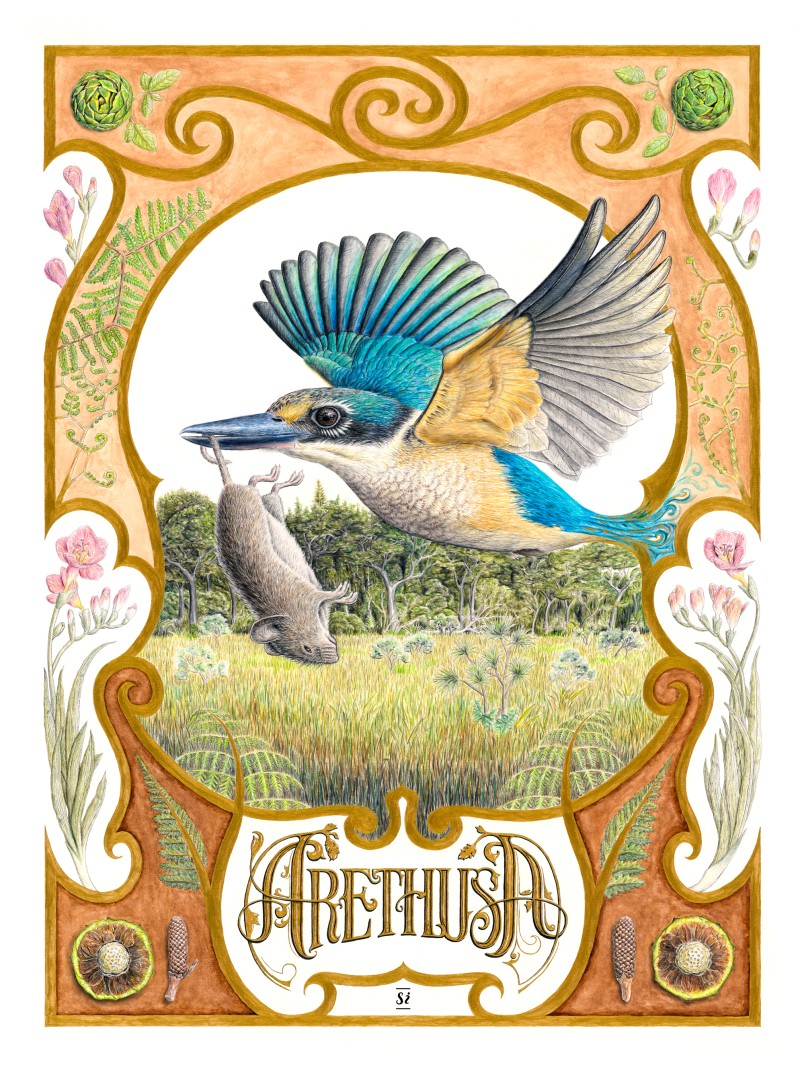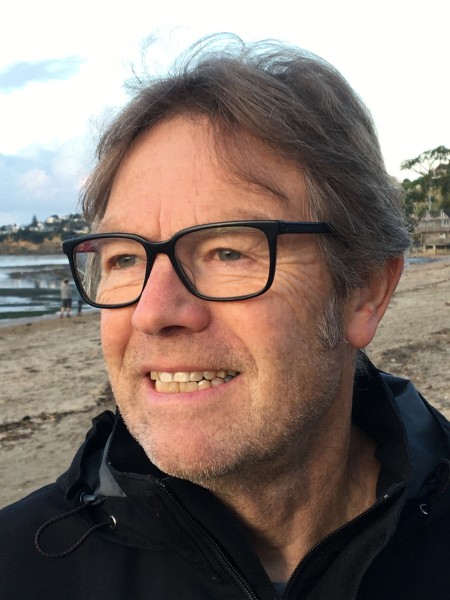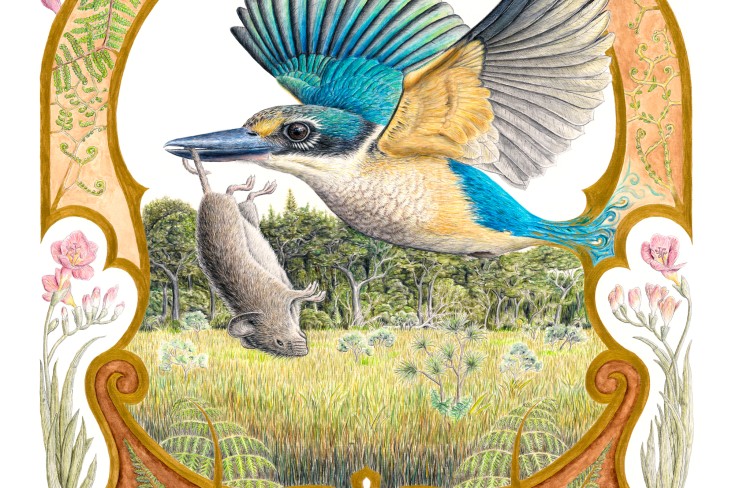Arethusa Reserve
Northland

Arethusa’s Golden Legacy. Artist: Simon Dowling
This far North
Writer: Paul White
Between two oceans hides a hollow place
where forest now is no more
than buried wood
shrouded in a blanket made of swamp.
Above life breathes, though some of it needs killing.
Rats, possums, mice and weeds
are not what any garden wants.
What gardens want was grown here once.
Full, fragrant freesias still bloom every year
beside tall raupō, adolescent kauri trees
next to umbrella ferns where rare frogs leap
bitterns boom and small working bees
tend the place with human hands
while hunched kōtare watching know
the best place to look for fish
is not between two oceans.

Writer Paul White
Most people whizz past to see where the oceans meet, off Cape Reinga. But there’s another place of myth and magic on the slim Aupōuri Peninsula. This myth is Greek. Arethusa was a water nymph who bathed naked in a river that was itself the river god Alpheus. He fell in love with her, and so revealed himself in human form. Terrified, Arethusa ran, perspiring so much she transformed into a stream.
Alpheus became a river again, into which Arethusa flowed; their waters mingled. Turning off the road at Pukenui I found the gate next to the one marked “Not Arethusa”. Frogs leapt luminescent in the headlights, rain pelted, and the track slid under the tyres. In the morning, a kāhu glided over what looked like a field of reeds, and fantails pretended they were glad to see me at the lodge.
When the others arrived, we walked the grass path that Scotty diligently mows, met Murray with his home-made mouse trap and learned that the European pines need felling, weeds choke anything but themselves.
Locals were jogging and strolling, with and without babies in buggies, round “their park”. A bit overgrown, some think.
To Chris, Marianna, and those who drive an hour or more for working bees, though, this is where rimu and tōtara planted by volunteers in the 80s are thriving, where kohekohe is reseeding naturally again, and kauri, which rarely survives near water, is growing strong. It turns out that Dagny Oxford’s legacy came with a hidden magic power. Wetland captures carbon faster than a forest can.
Arethusa's Golden Legacy
Artist: Simon Dowling

Artist: Simon Dowling
The kōtare in my artwork evokes the idea of leaving a legacy by embodying the contributions of many volunteers eradicating pests to save the forest and birds. Native flora is entwined within a sacred golden border that represents pure nature.
Introduced freesias on the reserve’s fringes are depicted outside the border. Arethusa was gifted to Forest & Bird by Dagny Oxford in 1985, and its rare dune lake habitat is slowly being restored by the Far North Branch. Kauri cones represent the volunteers who planted these regenerating trees 35 years ago.
Medium: Pen, pencil, watercolour, and acrylic on cotton rag paper.
Read more about Arethusa.

